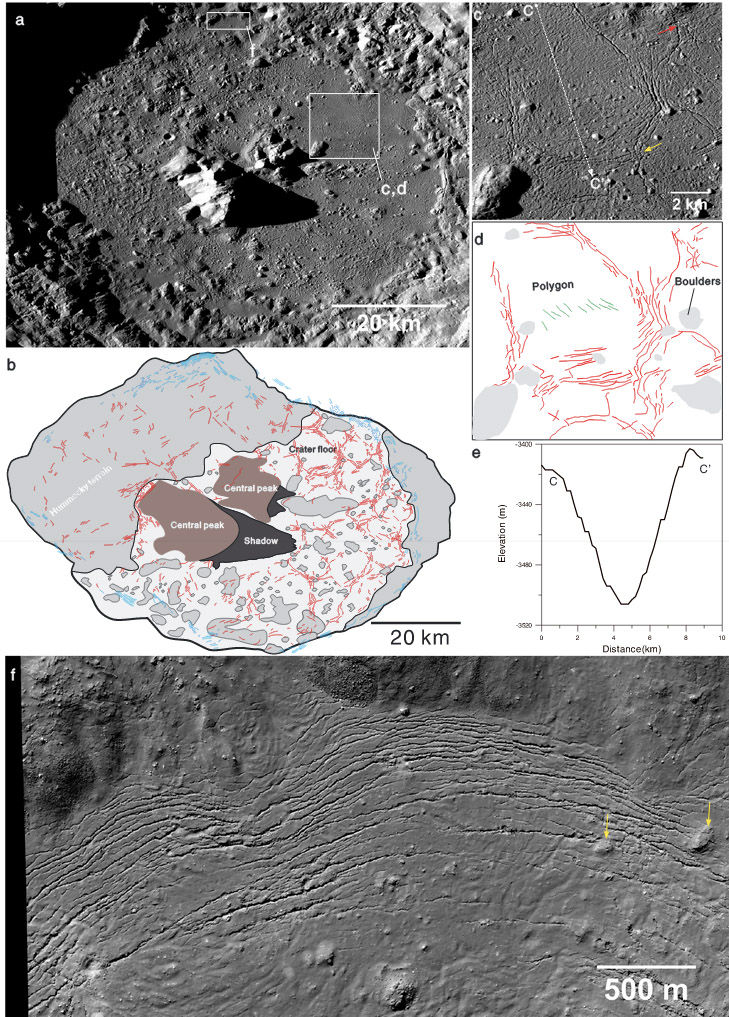Difference between revisions of "October 20, 2014"
| Line 11: | Line 11: | ||
<br /> | <br /> | ||
<strong>Related Links</strong><br /> | <strong>Related Links</strong><br /> | ||
| − | <em>[ | + | <em>[[21st Century Atlas of the Moon|21st Century Atlas]]</em> chart 15.<br /> |
Zhiyong Xiao, Zuoxun Zeng, Zhiyong Li, David M. Blair, Long Xiao (2014) [http://web.psi.edu:2107/enhanced/doi/10.1002/2013JE004560/ Cooling fractures in impact melt deposits on the Moon and Mercury: Implications for cooling solely by thermal radiation.] <em>Journal of Geophysical Research 117</em>, #7, July, 2014. <br /> | Zhiyong Xiao, Zuoxun Zeng, Zhiyong Li, David M. Blair, Long Xiao (2014) [http://web.psi.edu:2107/enhanced/doi/10.1002/2013JE004560/ Cooling fractures in impact melt deposits on the Moon and Mercury: Implications for cooling solely by thermal radiation.] <em>Journal of Geophysical Research 117</em>, #7, July, 2014. <br /> | ||
<br /> | <br /> | ||
Latest revision as of 08:35, 28 October 2018
Big Cooling Cracks

illustration from Zhiyong Xiao and colleagues, Journal of Geophysical Research
When thick lava flows on Earth cool they often form columnar joints, a vertical, hexagonal pattern of fractures; Giant's Causeway in Northern Ireland is a famous example. Before the Lunar Reconnaissance Orbiter we had only a few images good enough to show such lunar fractures, now there are many. So, when molten masses on the Moon cool do they form fractures? Zhiyong Xiao and colleagues investigated this question by looking at fractures within impact melt sheets in lunar and mercurian craters. The image above shows the melt deposits of the floor of Tycho, with the fractures interpreted to be formed due to cooling. Part d of the image maps in red lines a set of fractures making a polygonal pattern about 8 km wide. Although it is not obvious from the LRO image (part c above), the center of the polygon is depressed about 80 m compared to its edges. This implies that the subsidence occurred during cooling of the impact melt, and that the bending stresses caused the fractures. By looking at fractures at different distances away from the crater wall (part f), and thus with likely different thicknesses of melt, the authors determined that the widths and spacings of fractures are proportional to deposit thickness. Also, solid debris/boulders embedded in the melt (yellow arrows in part f) seem to stop the propagation of fractures. Finally, these cooling fractures forming polygons in impact melt sheets may be the initial stages of columnar joints formation, but none have been found, yet.
Chuck Wood
Related Links
21st Century Atlas chart 15.
Zhiyong Xiao, Zuoxun Zeng, Zhiyong Li, David M. Blair, Long Xiao (2014) Cooling fractures in impact melt deposits on the Moon and Mercury: Implications for cooling solely by thermal radiation. Journal of Geophysical Research 117, #7, July, 2014.
Yesterday's LPOD: Borderless Sea
Tomorrow's LPOD: Classic View with a Classic Scope
COMMENTS?
Register, Log in, and join in the comments.



